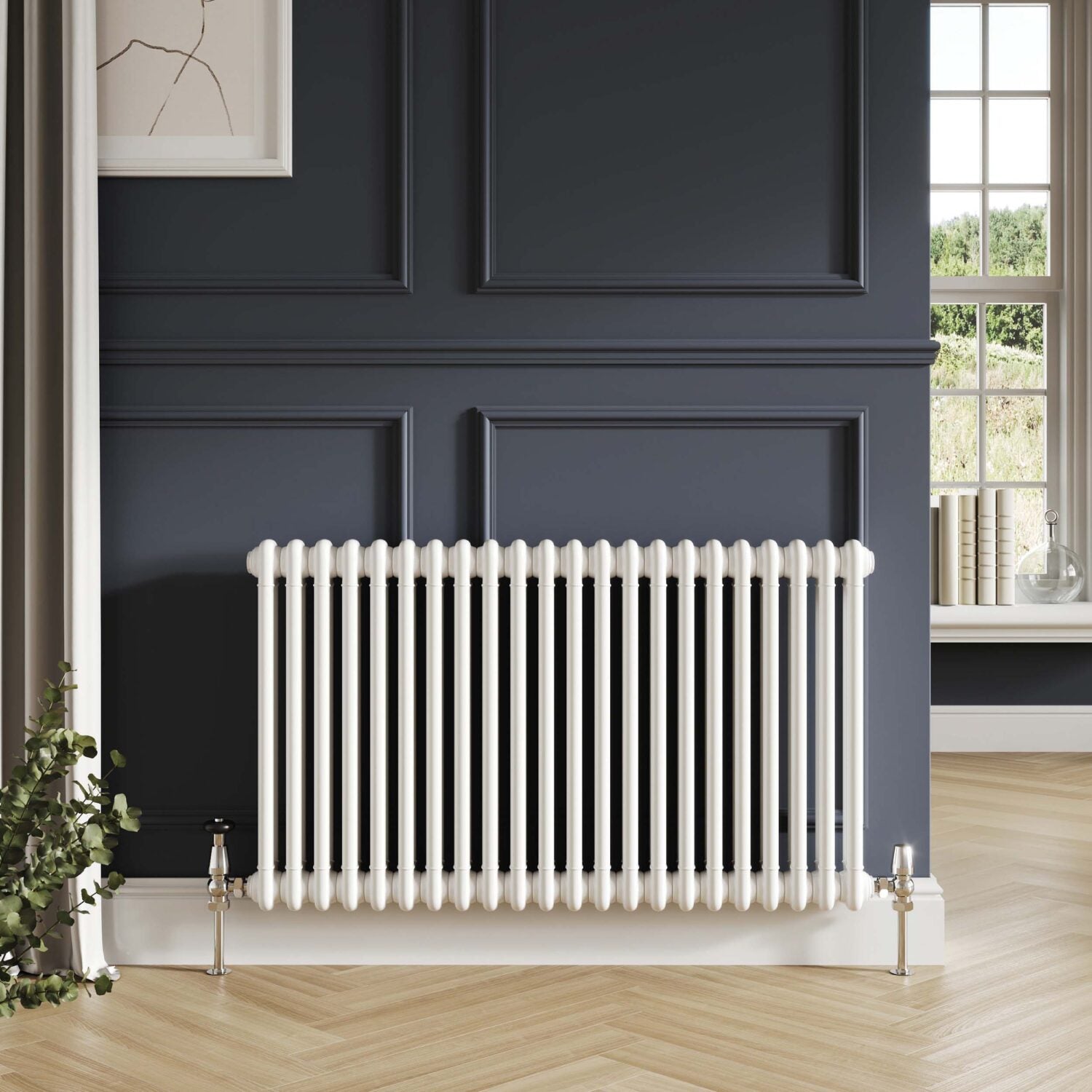01 864 5119

How to Choose the Right Heating for Open-Plan Living Areas
How to Choose the Right Heating for Open-Plan Living Areas
Open-plan living spaces have become a hallmark of modern home design, offering a sense of light, space and flow that’s perfect for both family life and entertaining. However, heating these expansive, multifunctional areas can be a challenge. Without defined rooms to trap warmth, poor heating choices can leave the space feeling draughty and inefficient.
To get the best results, it's important to choose radiators that not only heat effectively but also complement the open-plan aesthetic. Here’s how to find the right solution for your space—with a particular focus on the practical and stylish benefits of vertical radiators.
Vertical Radiators: Heating Without Compromising Space
Vertical radiators are one of the most effective solutions for open-plan layouts. Their tall, slim design allows them to be installed on narrow or awkward walls that would otherwise go unused—ideal for layouts dominated by large windows, kitchen units or furniture.
Despite their compact footprint, vertical radiators offer excellent heat output, making them perfect for larger, open spaces. They also double as a modern design statement, with clean lines and contemporary finishes that suit both minimalist and industrial interiors.
These radiators are particularly useful in zoning open-plan areas. Installing a vertical radiator between two functional zones—such as a lounge and dining space—can create a subtle visual divide while still maintaining the open feel.
Benefits of vertical radiators:
Ideal for narrow wall spaces
High heat output for larger rooms
Stylish and modern appearance
Useful for visual zoning in open-plan layouts
Column Radiators: Timeless Style with Effective Heat Retention
Column radiators blend classic design with modern performance. Originally associated with period properties, they’ve evolved into a versatile option that suits both traditional and contemporary interiors. Their distinctive columns allow for a large surface area, which means they retain and radiate heat effectively—particularly useful in rooms with high ceilings.
In open-plan settings, column radiators work well along longer walls or beneath large windows. Their substantial look adds visual interest and architectural character, making them a great choice for homeowners who want their heating to be as decorative as it is practical.
Why consider column radiators:
Excellent heat retention
Adds visual character to open spaces
Suitable for rooms with high ceilings
Available in both vertical and horizontal options
Aluminum Radiators: Fast Heating, Lightweight, and Efficient
If efficiency and responsiveness are high on your list, aluminum radiators are worth serious consideration. Thanks to the conductive properties of aluminum, these radiators heat up quickly and cool down just as fast—making them ideal for households that need flexible heating control.
Their lightweight design makes installation easier, especially on internal or plasterboard walls, and they’re a particularly good option for eco-conscious homeowners looking to reduce energy use without sacrificing warmth.
Advantages of aluminum radiators:
Rapid heat-up times
Energy-efficient and cost-effective
Lightweight and easy to install
Modern appearance with versatile placement options
Low-Level Radiators: Subtle and Space-Savvy
Low-level radiators are a smart choice in open-plan spaces with large windows, bi-fold doors, or glass walls—common features in modern kitchen-diners and extensions. These radiators fit neatly beneath windowsills, providing warmth without blocking views or interfering with furniture layouts.
Though they may appear compact, many low-level radiators are designed to deliver a powerful heat output, making them ideal for maintaining comfort without disrupting the aesthetics of the room.
Key benefits:
Fits neatly under windows or along low walls
Blends easily into room design
Provides targeted heat without dominating the space
Practical Tips Before You Choose
To make sure you’re selecting the best heating solution for your open-plan area, keep the following considerations in mind:
Calculate Your BTU Requirement: Always use a BTU (British Thermal Unit) calculator to determine how much heat your space needs. This depends on the size of the room, insulation, and number of windows or doors.
Plan Your Layout Carefully: Open-plan designs can make traditional radiator placement tricky. Think about furniture placement and foot traffic before deciding on positioning.
Choose Style That Matches Function: Your radiator should complement your overall interior—whether you favour modern minimalism, industrial textures, or rustic charm.
Think About Materials: Aluminium heats quickly but cools down fast, while cast iron retains heat for longer. Choose based on how you use your space day-to-day.
Insulation is Key: No radiator will perform well in a poorly insulated space. Ensure walls, windows and flooring are well insulated to maximise heating efficiency.
Conclusion
Heating an open-plan space doesn't have to be difficult—especially when you choose radiators designed with these environments in mind. Vertical radiators, in particular, offer a blend of strong performance and space-saving style that makes them ideal for the modern home. With thoughtful planning, the right materials, and careful positioning, you can ensure your open-plan area stays warm, welcoming, and stylish all year round.
